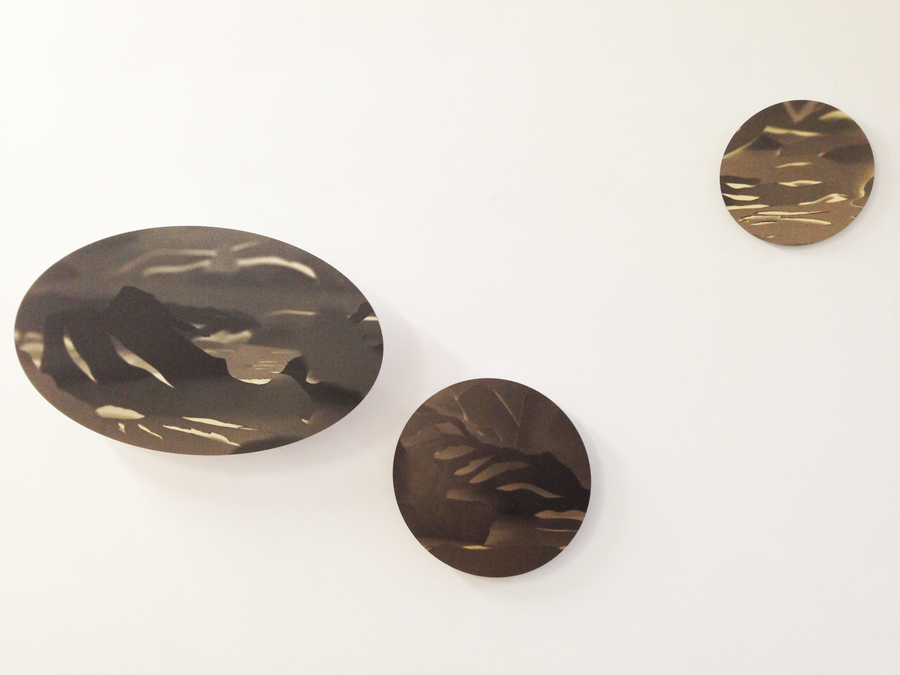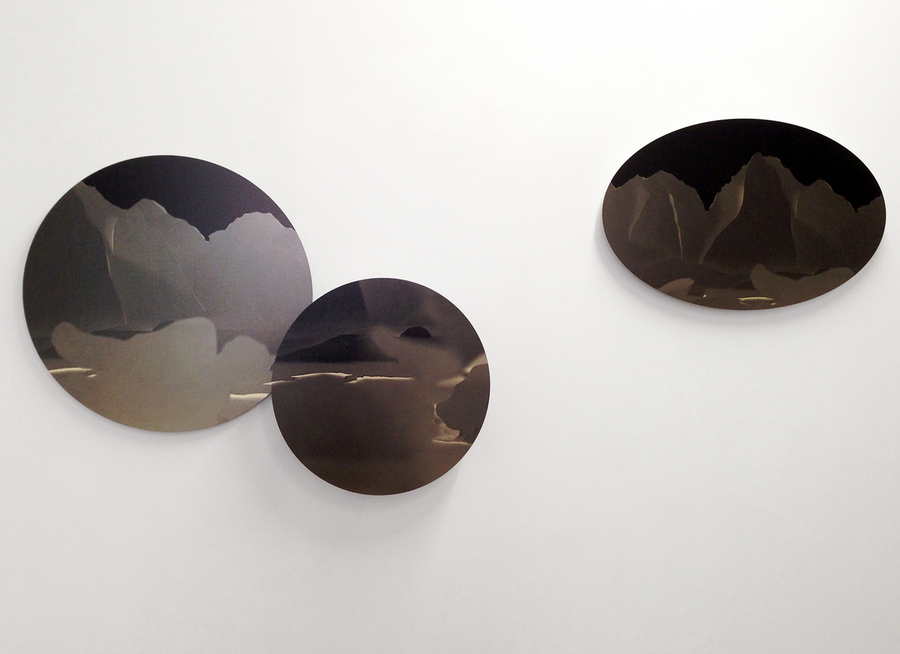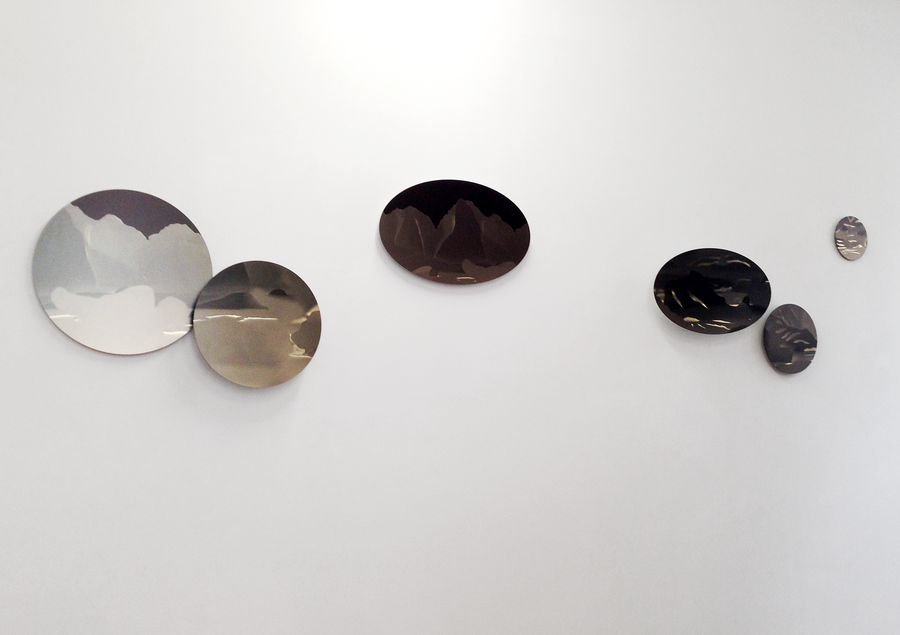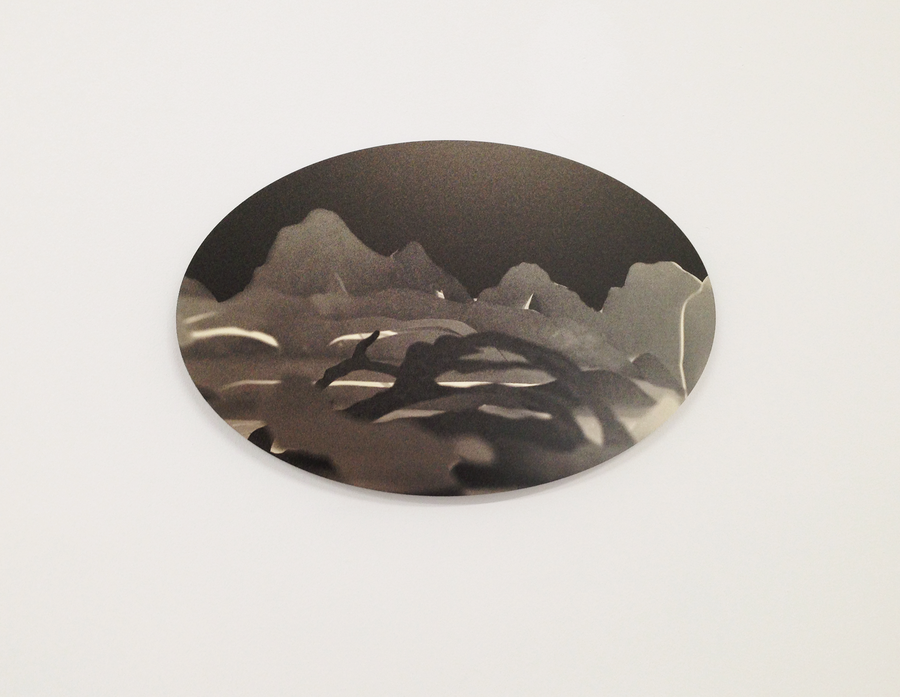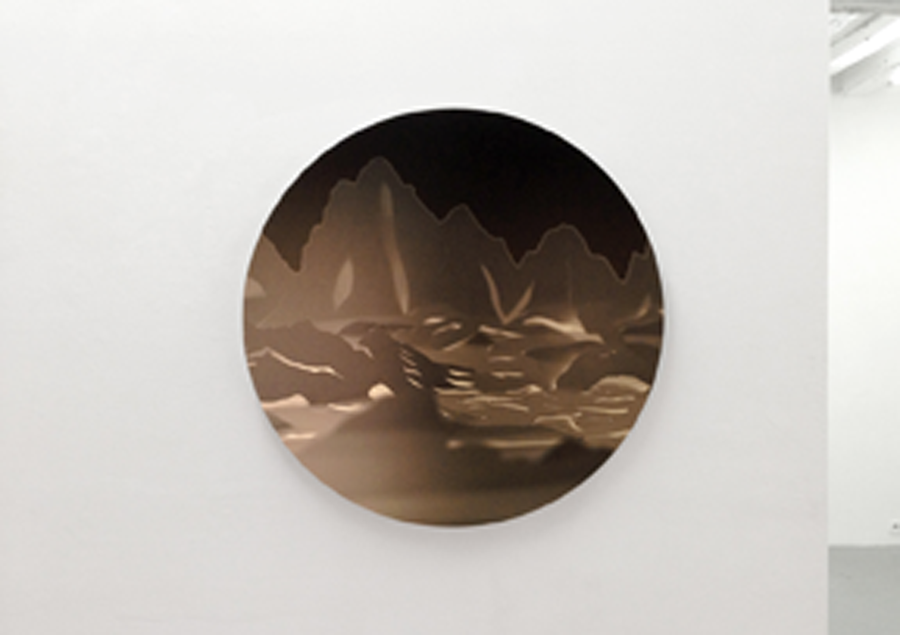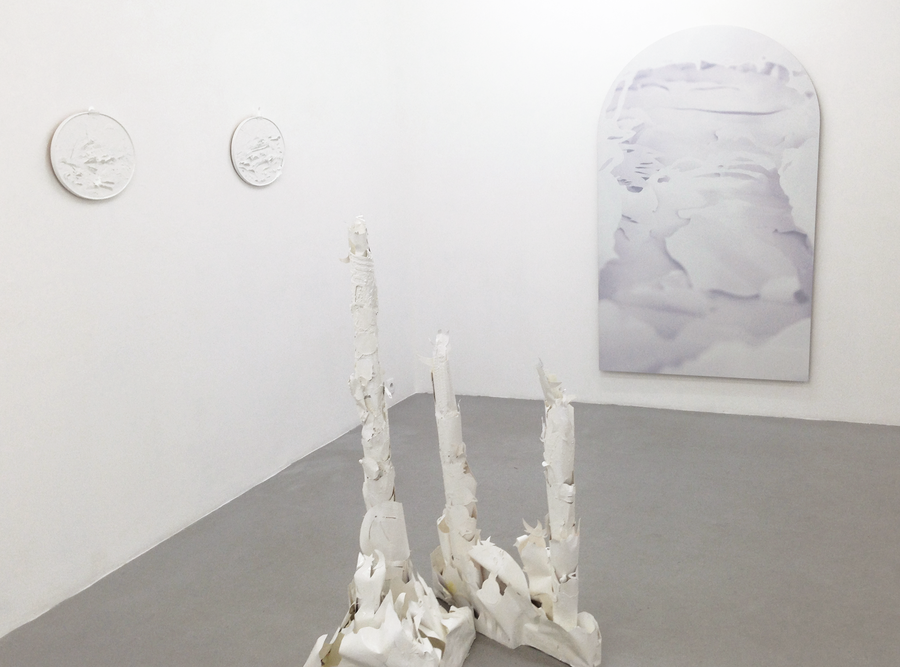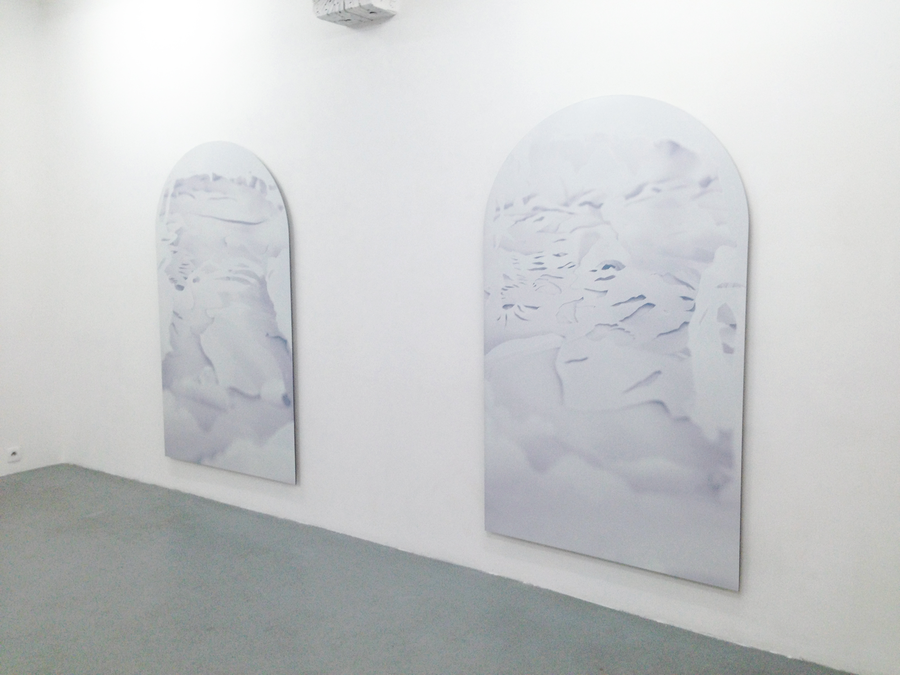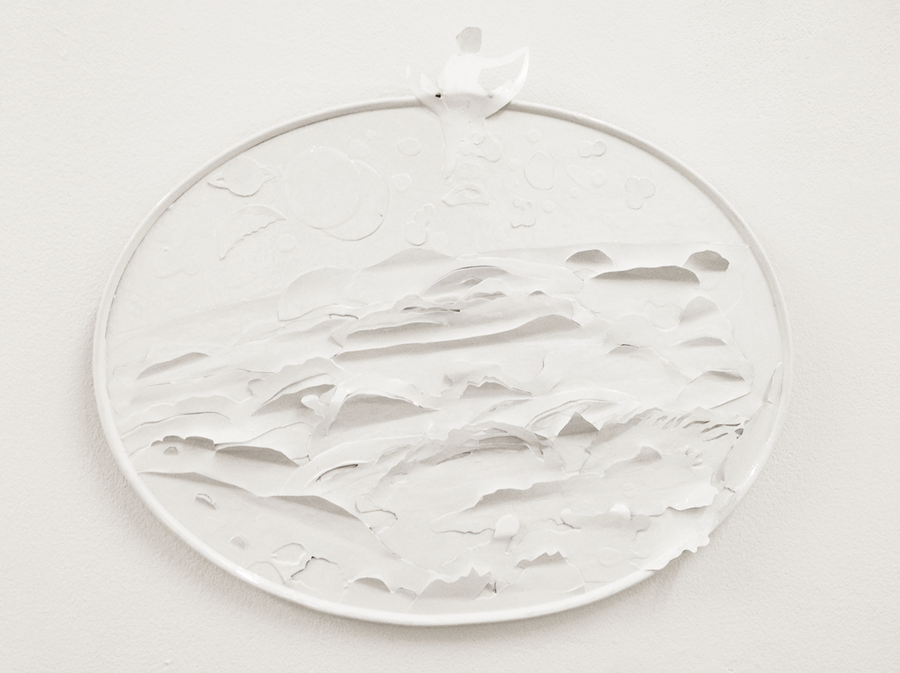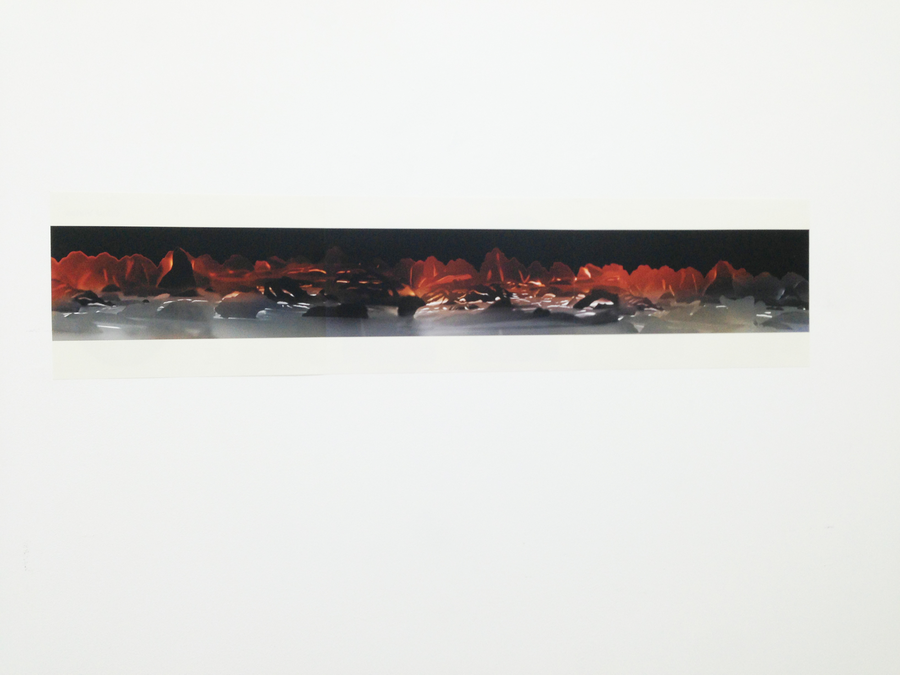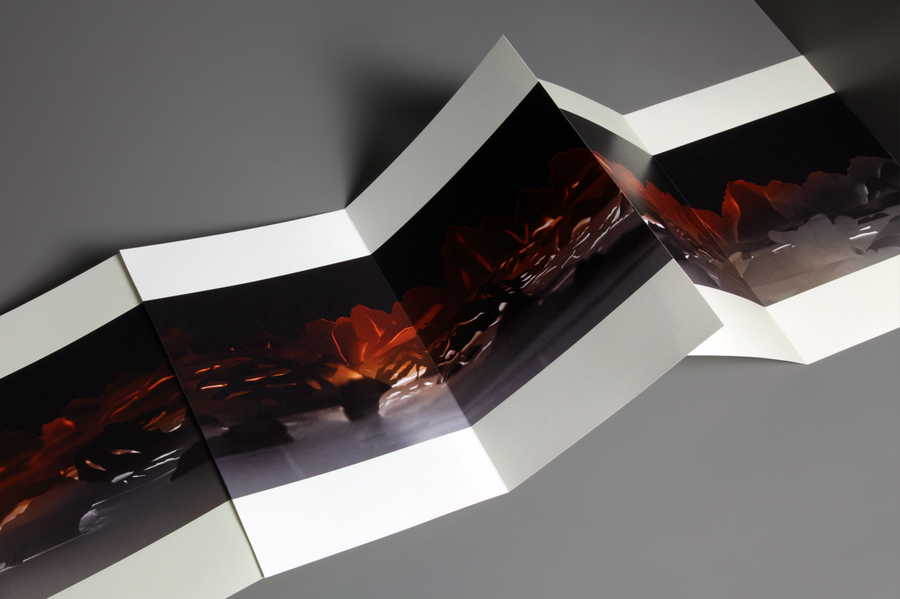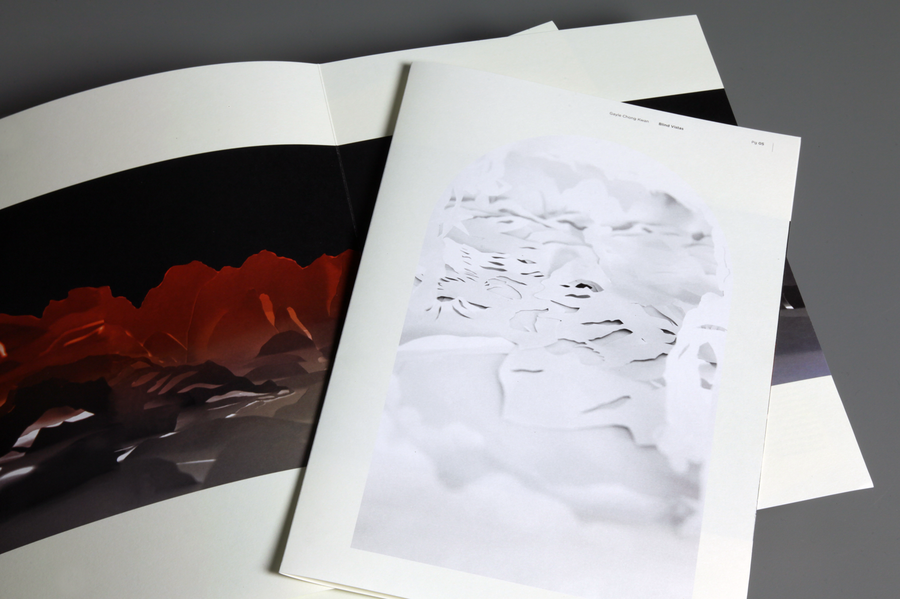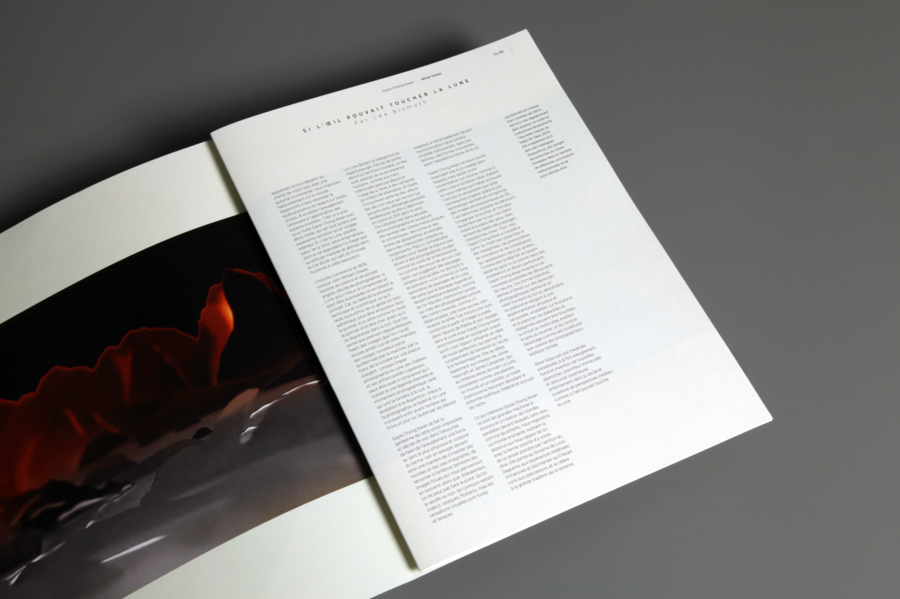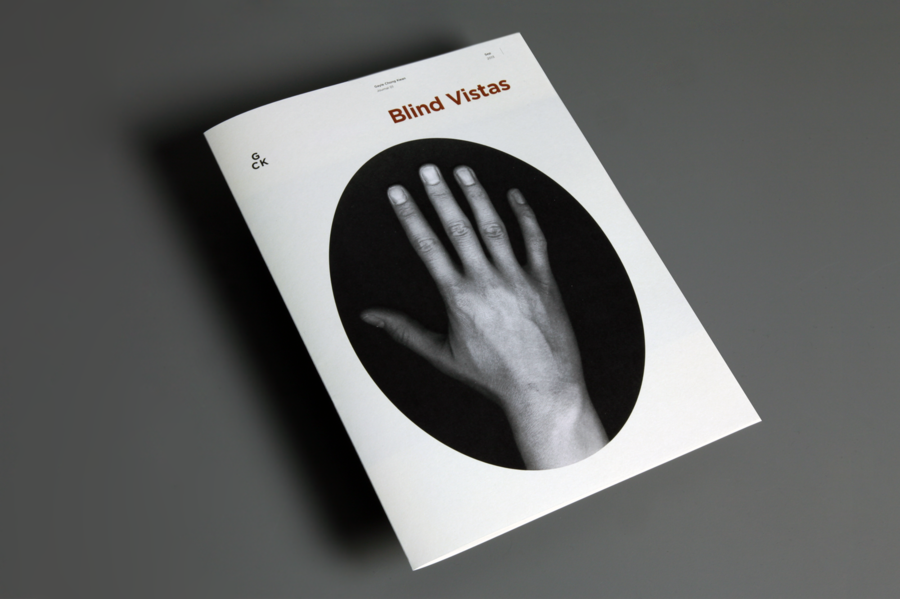Blind Vistas (2013)
Details Tactile Photographs, sculptures, di-bond prints, publication
Installation Solo Exhibition, Galerie Alberta Pane,
Paris
Dates 7 September – 16 November 2013
Photo Credit Gayle Chong Kwan
Links www.galeriealbertapane.com
Additional Information Limited-edition publication, featuring a fold-out panoramic artwork, created by the artist with Graphical House,
edition of 250
'If the eye could touch the Moon'
Léa Bismuth (excerpt)
The moon becomes a metaphor for the blind vision. First of all, it is an island territory, an isolated place, devoid of all human presence, confronted with infertile seas seen from the shores of the earth over hundreds and thousands of kilometres. And Gayle Chong Kwan likes islands: She turns them into non-places that are not found on any map; dark and strange territories that she has already orchestrated in the series The Obsidian Isle (2011), for which she created scenes of melancholy and romanticism between photography and sculpture: ruins and remains of ancient geography in a violet or reddish hued twilight. Today, the theatricalisation has disappeared in favour of purity, of oval and round shaped photographs like Renaissance tondos or keyholes, to suggest moon landscapes rather than showing them. "I created a large panorama of versions of moon landscapes, in a way that the scenes we see becomes iridescent like liquid gold", explains the artist, who creates photographs that remind us of inversed mirrors; as if to project a vision instead of receiving its reflection. These gold mirrors are based on images from the works of Méliès, particularly his Voyage dans la Lune, to whom Gayle Chong Kwan renders homage when emphasizing the extent to which the artisanal aspect, regardless of perfection, permits the emergence of emotion and the access to phantasmagoria. She also refers to the sculptural photographs by James Naysmith and James Carpenter, who in the 19th century published The Moon: Considered as a Planet, a World, and a Satellite, a photographic and astronomical investigation that unleashed the star's poetical, theatrical and pictorial potential. Gayle Chong Kwan is particularly interested in the mechanisms that create illusions and parallel worlds, to make us observe a magical world, speechless like children and forgetting the distance that separates us, with the strong will to believe, to be fooled, by a dream's deception. She thinks of Louis Daguerre's dioramas, of the fascinating theatrical experiences to which he subjected his audience; she refers to the great tradition of the magic lantern and to the enchantment we feel in the face of projected, 'empowered' light that carries moving forms in its rays with the appearance of similitude of life itself. Nevertheless, Gayle Chong Kwan does not invite us to a journey into space, but to focus on the most intimate spheres instead, as if first and foremost it were in ourselves where we may find the moon that seems so far away. This introspection happens through the senses: she uses techniques that allow photographic images to be printed in three dimensional relief, through which it is possible to discover the image through touching and not only with vision. Our hands 'see' in place of the eyes: they feel the shape of the scenery; they caress the troughs and summits. Gayle Chong Kwan has used the motif of stalactites and stalagmites, those phenomena of petrification and crystallisation that appear in caves. Just like she has done before with respect to taste and smell in installations and dinner-performances, Gayle Chong Kwan invents new possibilities to discover an artwork. White forms painted in detail on tactile and photographic relief-like, prints, ascend from the floor and descend from the ceiling, they oblige to physical and sensorial experimentation. "Installed on the ceiling and the floor, the stalactites and stalagmites can be touched, or at least they evoke the tactile sense: I perceive them more as sculptures than as photographs", explains the artist. Gayle Chong Kwan's Blind Vistas is a paradoxical journey, at the same time an enforced blindness and an invention of new approaches: flawless whiteness and cavernous darkness; imprisonment in blindness; and the opening of unknown perspectives. As if the eye could touch the moon.
Text